
How to Use Peltier Module: Examples, Pinouts, and Specs
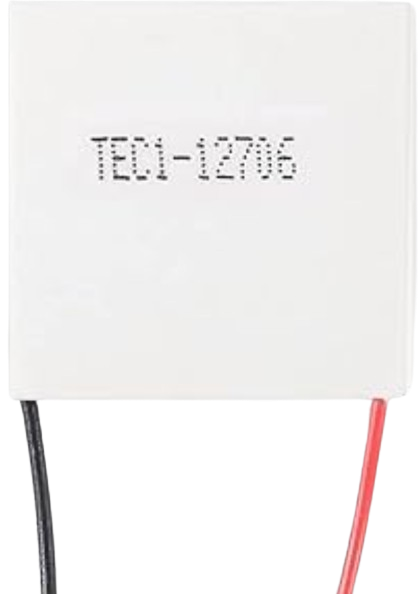
 Design with Peltier Module in Cirkit Designer
Design with Peltier Module in Cirkit DesignerIntroduction
A Peltier module, also known as a thermoelectric cooler (TEC), is a solid-state device that transfers heat from one side to the other when an electric current is applied. This creates a temperature difference, with one side becoming cold and the other side becoming hot. Peltier modules are compact, lightweight, and highly reliable, making them ideal for applications requiring precise temperature control.
Explore Projects Built with Peltier Module
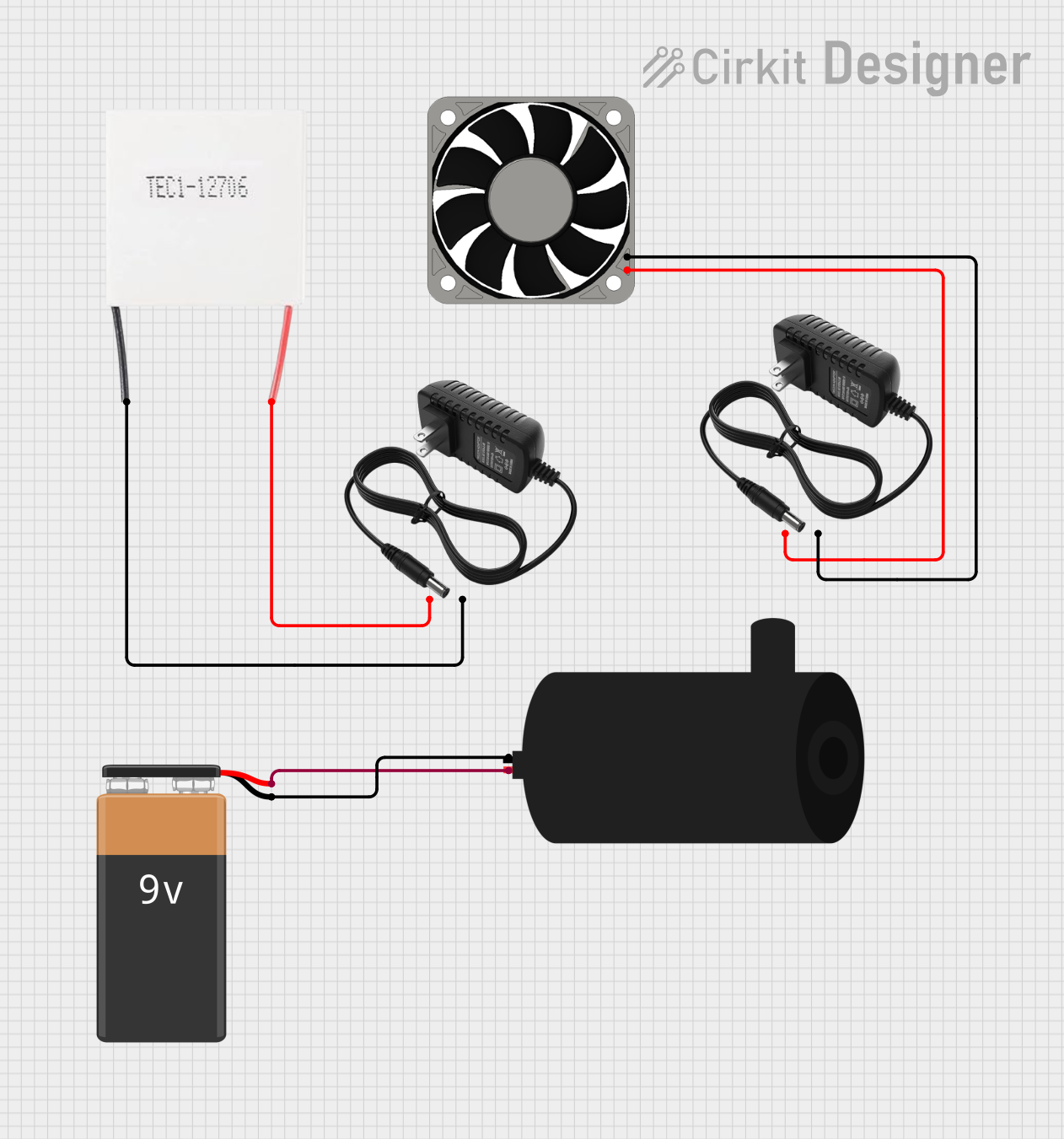
 Open Project in Cirkit Designer
Open Project in Cirkit Designer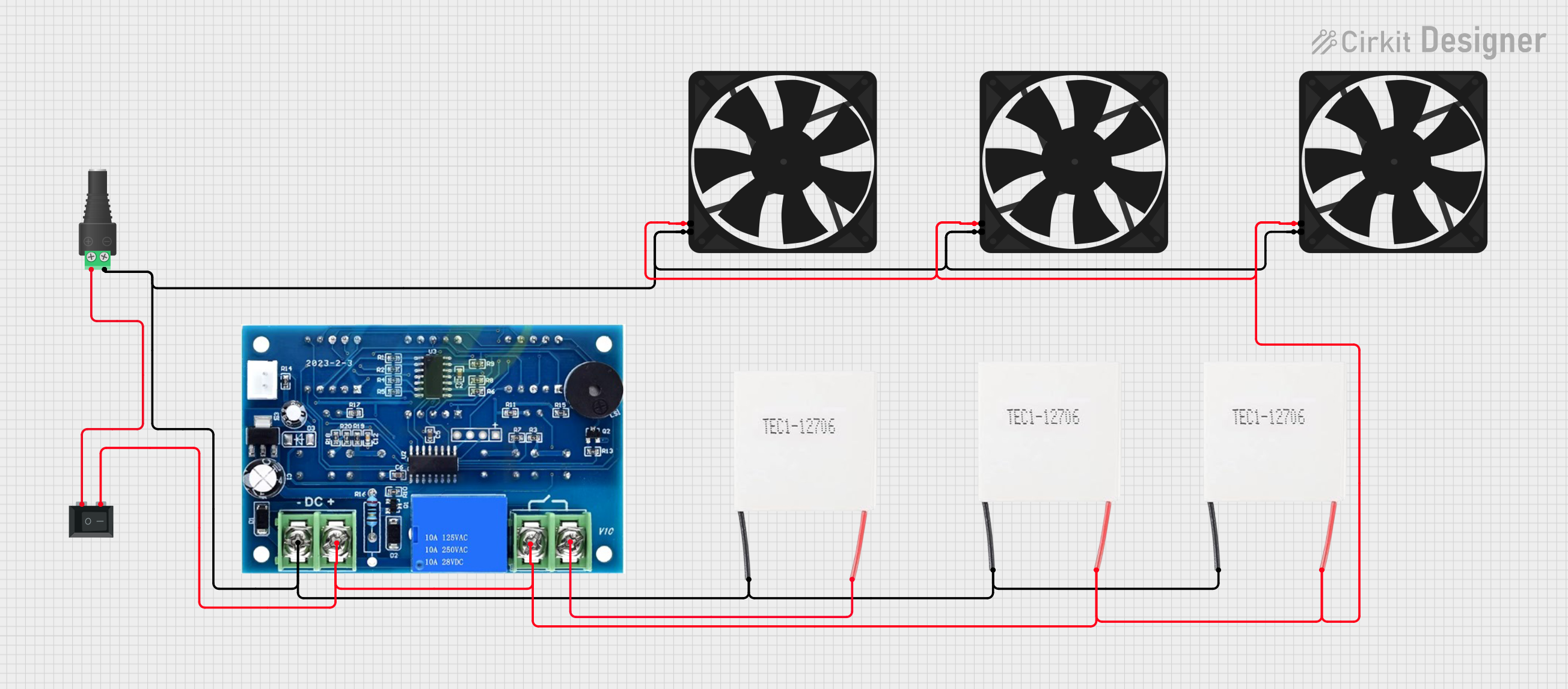
 Open Project in Cirkit Designer
Open Project in Cirkit Designer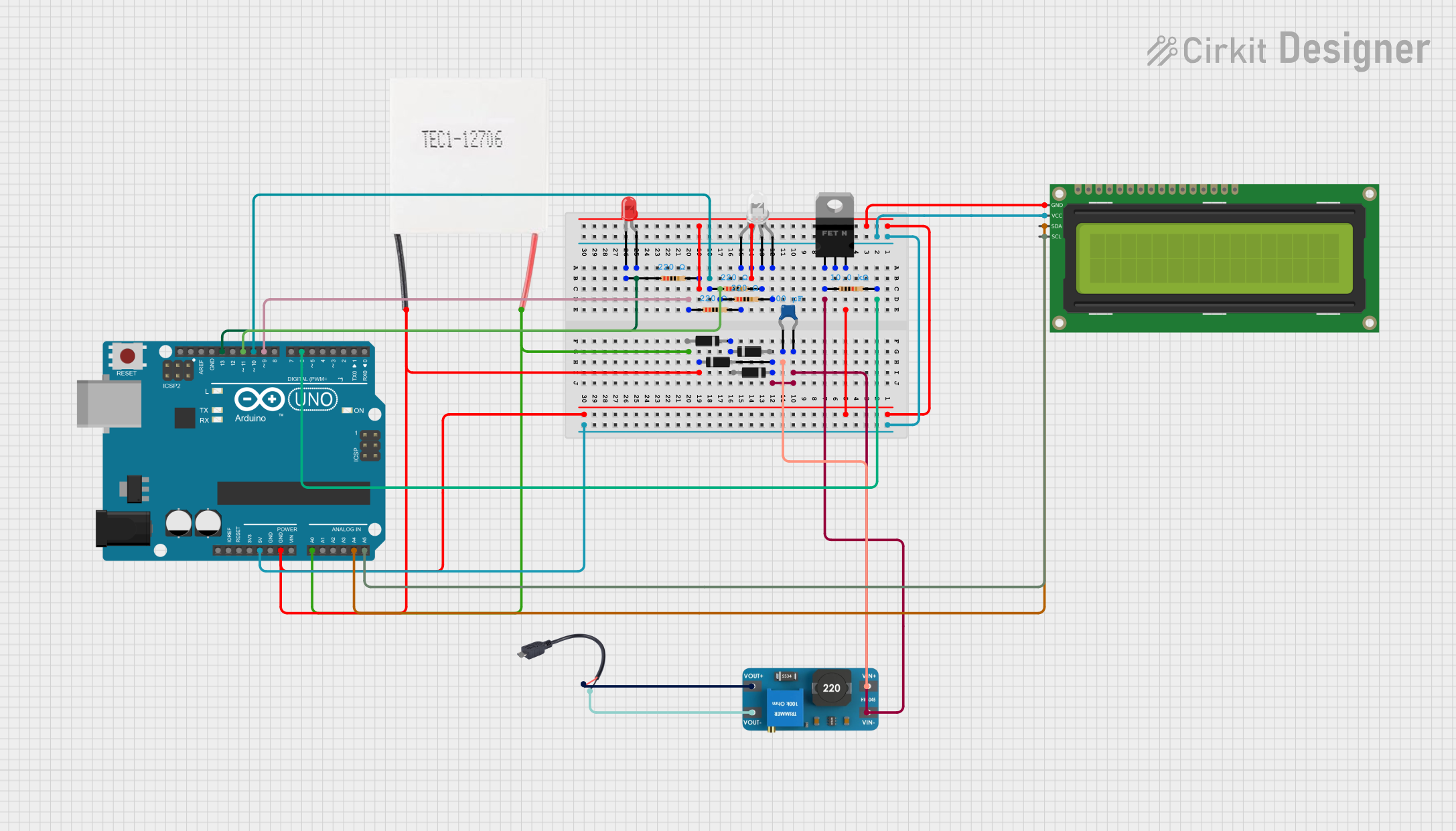
 Open Project in Cirkit Designer
Open Project in Cirkit Designer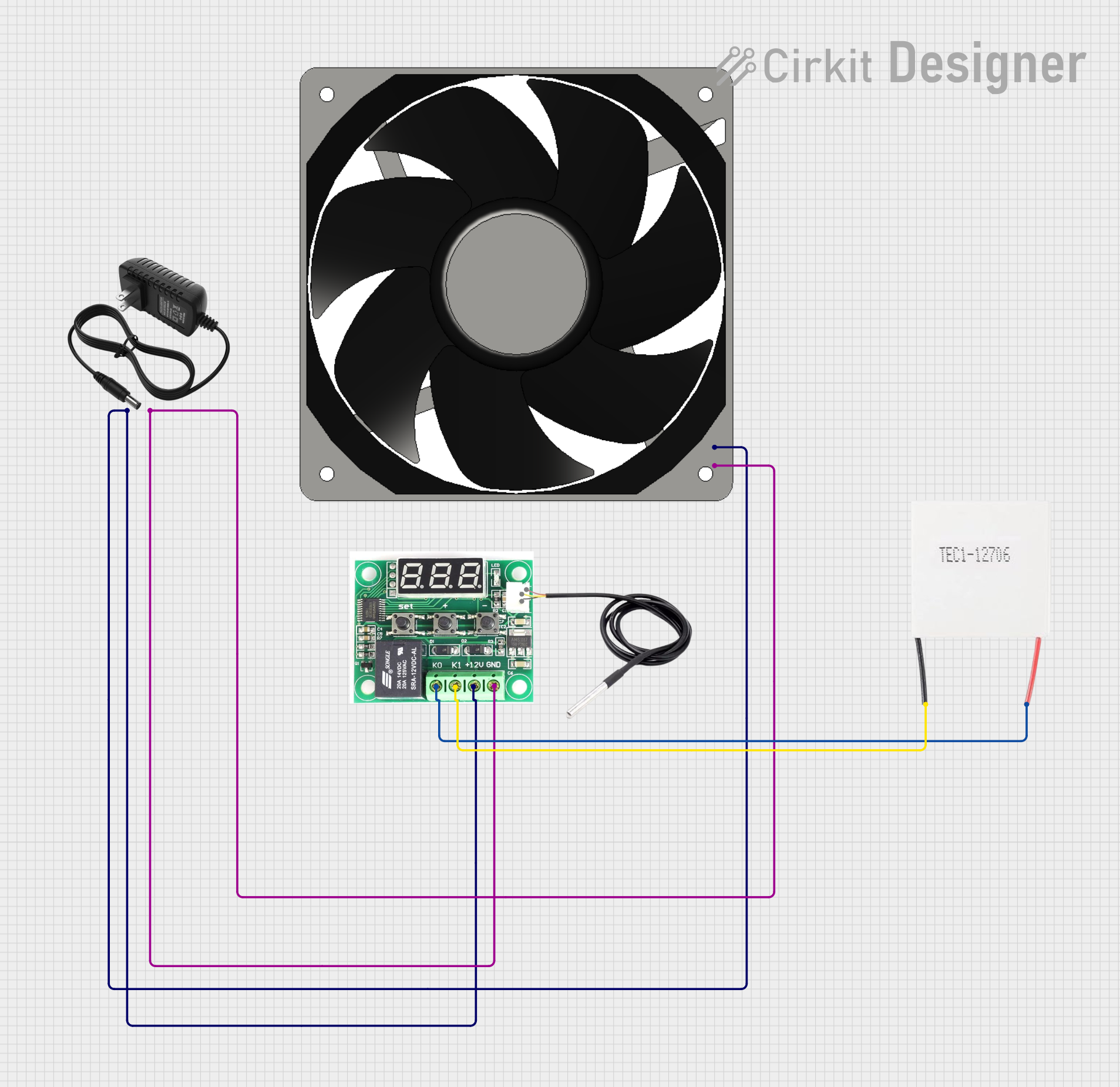
 Open Project in Cirkit Designer
Open Project in Cirkit DesignerExplore Projects Built with Peltier Module

 Open Project in Cirkit Designer
Open Project in Cirkit Designer
 Open Project in Cirkit Designer
Open Project in Cirkit Designer
 Open Project in Cirkit Designer
Open Project in Cirkit Designer
 Open Project in Cirkit Designer
Open Project in Cirkit DesignerCommon Applications and Use Cases
- Cooling electronic components, such as CPUs, GPUs, or laser diodes
- Portable refrigeration systems
- Climate-controlled enclosures
- Medical devices, such as portable vaccine coolers
- Heating or cooling seats in automotive applications
- DIY projects for temperature regulation
Technical Specifications
Below are the general technical specifications for a standard Peltier module (e.g., TEC1-12706). Specifications may vary depending on the specific model.
| Parameter | Value |
|---|---|
| Operating Voltage (V) | 12V DC (typical) |
| Maximum Current (A) | 6A |
| Maximum Power (W) | 72W |
| Temperature Difference (ΔT) | Up to 70°C |
| Dimensions (mm) | 40mm x 40mm x 3.6mm |
| Weight | ~20g |
| Material | Ceramic plates with semiconductor junctions |
Pin Configuration and Descriptions
Peltier modules typically have two wires for electrical connections:
| Wire Color | Description |
|---|---|
| Red | Positive terminal (connect to +V) |
| Black | Negative terminal (connect to GND) |
Usage Instructions
How to Use the Component in a Circuit
- Power Supply: Use a DC power supply capable of providing the required voltage and current. For a TEC1-12706 module, a 12V DC power supply with at least 6A current capacity is recommended.
- Heat Dissipation: Attach a heatsink or cooling fan to the hot side of the module to dissipate heat effectively. Failure to do so may cause the module to overheat and fail.
- Polarity: Connect the red wire to the positive terminal of the power supply and the black wire to the negative terminal. Reversing the polarity will reverse the hot and cold sides.
- Temperature Control: Use a temperature controller or pulse-width modulation (PWM) circuit to regulate the module's performance and prevent overheating.
Important Considerations and Best Practices
- Thermal Insulation: Ensure proper insulation between the hot and cold sides to maximize efficiency.
- Avoid Overheating: Always use a heatsink or fan on the hot side to prevent thermal damage.
- Power Supply: Use a stable and regulated power supply to avoid voltage spikes that could damage the module.
- Mounting: Use thermal paste or thermal pads between the module and heatsink for optimal heat transfer.
- Arduino Integration: Peltier modules can be controlled using an Arduino and a MOSFET or relay for switching. Below is an example Arduino code for controlling a Peltier module using a PWM signal.
// Example Arduino code to control a Peltier module using PWM
// Connect the Peltier module to a MOSFET or relay controlled by pin 9
const int peltierPin = 9; // PWM pin connected to the MOSFET gate or relay
void setup() {
pinMode(peltierPin, OUTPUT); // Set the pin as an output
}
void loop() {
// Gradually increase the PWM signal to control the Peltier module
for (int pwmValue = 0; pwmValue <= 255; pwmValue++) {
analogWrite(peltierPin, pwmValue); // Set PWM duty cycle
delay(20); // Wait for 20ms before increasing the value
}
// Gradually decrease the PWM signal
for (int pwmValue = 255; pwmValue >= 0; pwmValue--) {
analogWrite(peltierPin, pwmValue); // Set PWM duty cycle
delay(20); // Wait for 20ms before decreasing the value
}
}
Troubleshooting and FAQs
Common Issues Users Might Face
Module Overheating:
- Cause: Insufficient heat dissipation on the hot side.
- Solution: Attach a larger heatsink or use a cooling fan to improve heat dissipation.
Low Temperature Difference:
- Cause: Poor thermal contact or insufficient power supply.
- Solution: Apply thermal paste between the module and heatsink, and ensure the power supply meets the module's requirements.
No Cooling Effect:
- Cause: Incorrect wiring or damaged module.
- Solution: Verify the polarity of the connections and check the module for physical damage.
Module Not Working:
- Cause: Overvoltage or overheating damage.
- Solution: Replace the module and ensure proper voltage and cooling in future use.
Solutions and Tips for Troubleshooting
- Use a multimeter to check the voltage and current supplied to the module.
- Inspect the module for physical damage, such as cracks or burns.
- Test the module with a lower voltage to confirm basic functionality before full operation.
- Ensure the heatsink is securely mounted and thermal paste is evenly applied.
By following these guidelines, you can effectively use and maintain a Peltier module for various cooling and heating applications.